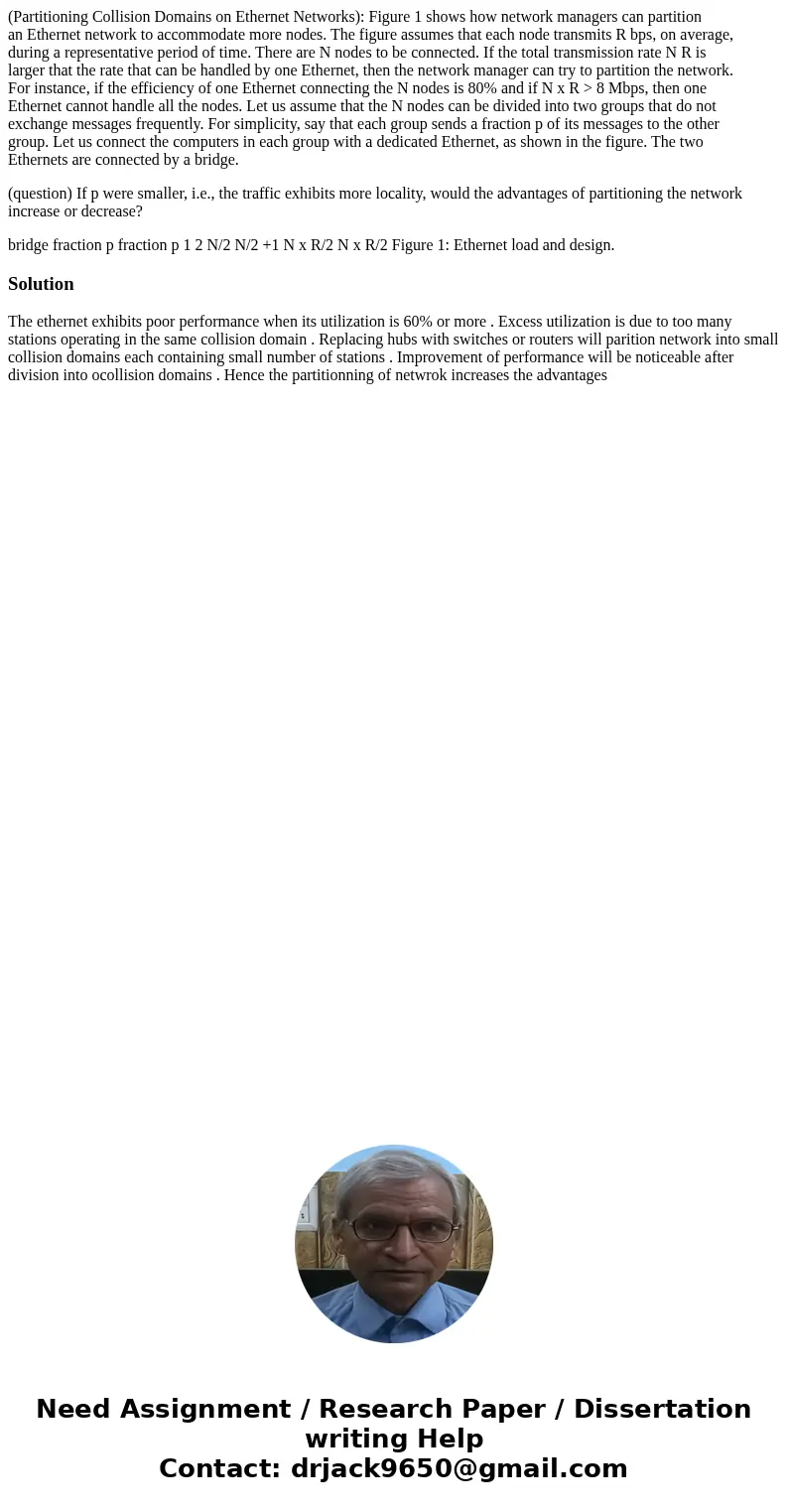Partitioning Collision Domains on Ethernet Networks Figure 1
(Partitioning Collision Domains on Ethernet Networks): Figure 1 shows how network managers can partition
an Ethernet network to accommodate more nodes. The figure assumes that each node transmits R bps, on average,
during a representative period of time. There are N nodes to be connected. If the total transmission rate N R is
larger that the rate that can be handled by one Ethernet, then the network manager can try to partition the network.
For instance, if the efficiency of one Ethernet connecting the N nodes is 80% and if N x R > 8 Mbps, then one
Ethernet cannot handle all the nodes. Let us assume that the N nodes can be divided into two groups that do not
exchange messages frequently. For simplicity, say that each group sends a fraction p of its messages to the other
group. Let us connect the computers in each group with a dedicated Ethernet, as shown in the figure. The two
Ethernets are connected by a bridge.
(question) If p were smaller, i.e., the traffic exhibits more locality, would the advantages of partitioning the network
increase or decrease?
Solution
The ethernet exhibits poor performance when its utilization is 60% or more . Excess utilization is due to too many stations operating in the same collision domain . Replacing hubs with switches or routers will parition network into small collision domains each containing small number of stations . Improvement of performance will be noticeable after division into ocollision domains . Hence the partitionning of netwrok increases the advantages

 Homework Sourse
Homework Sourse